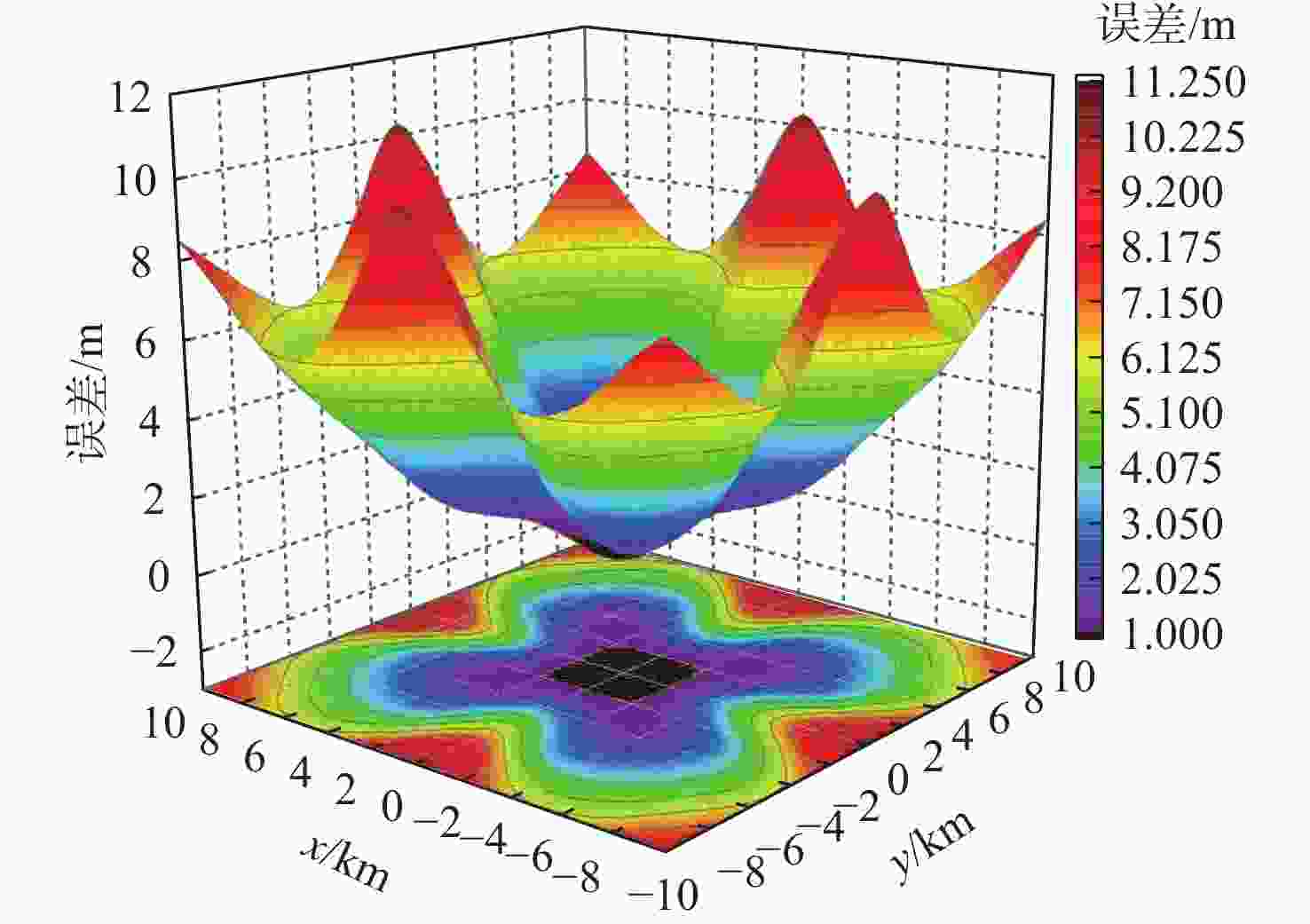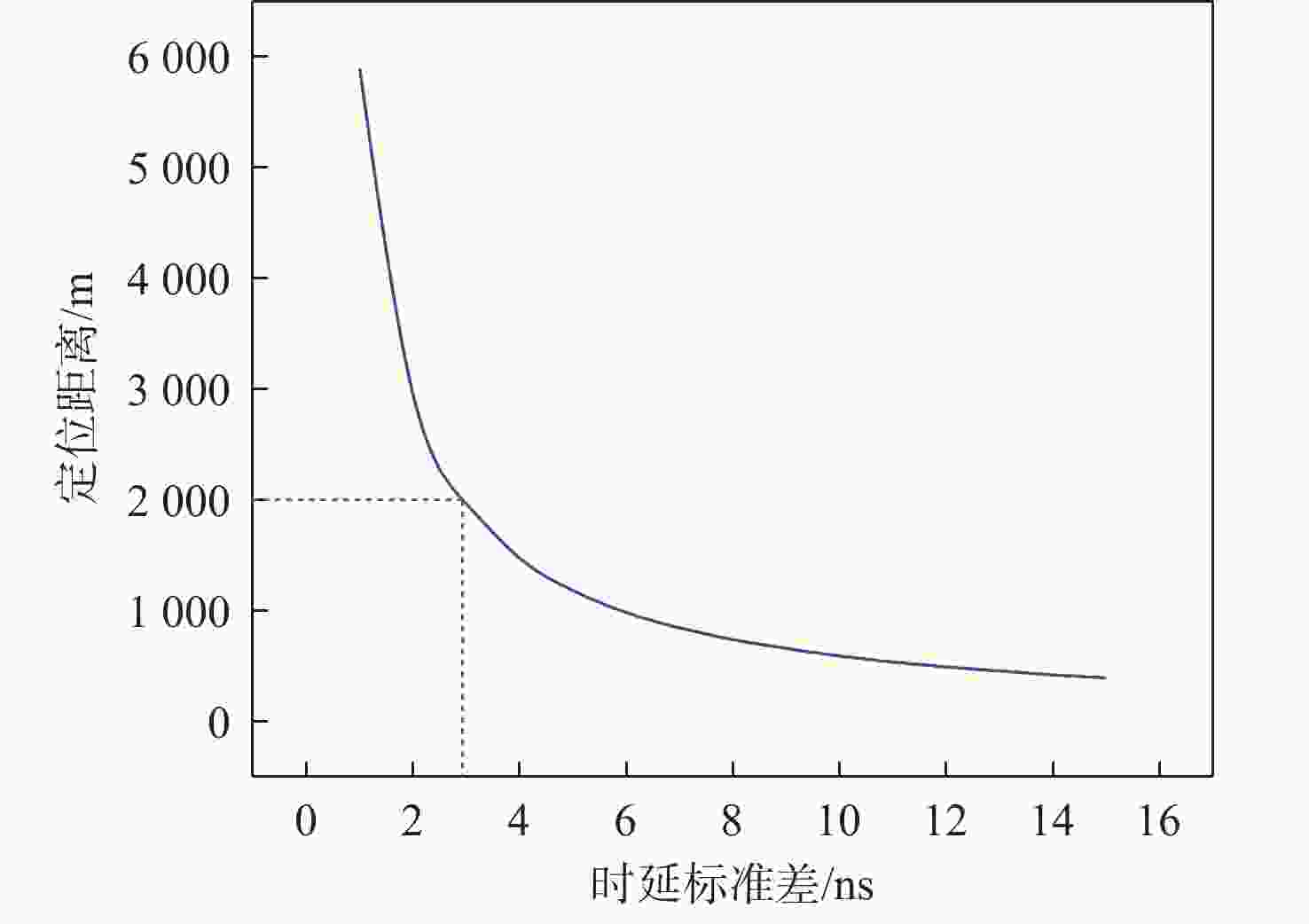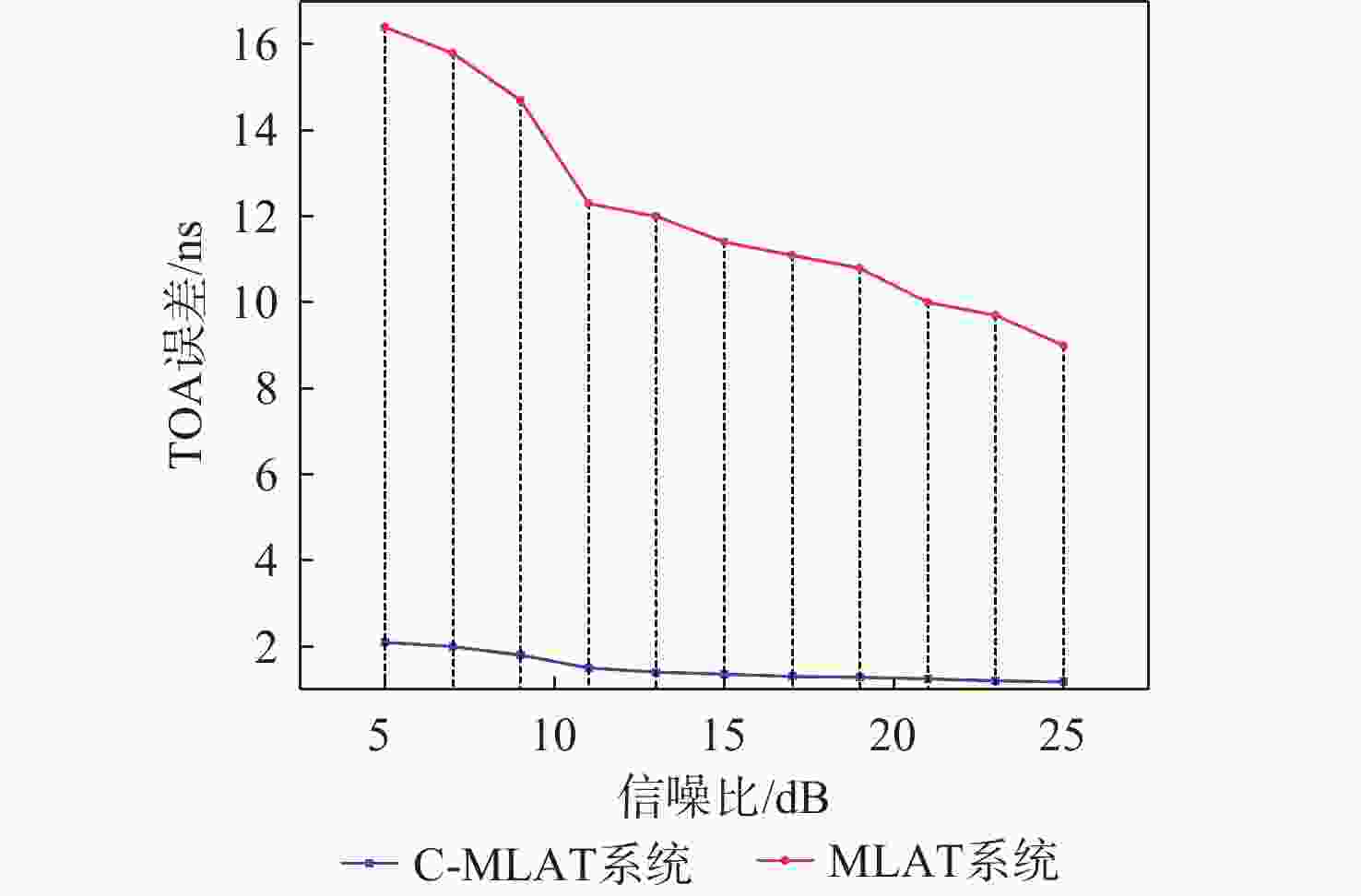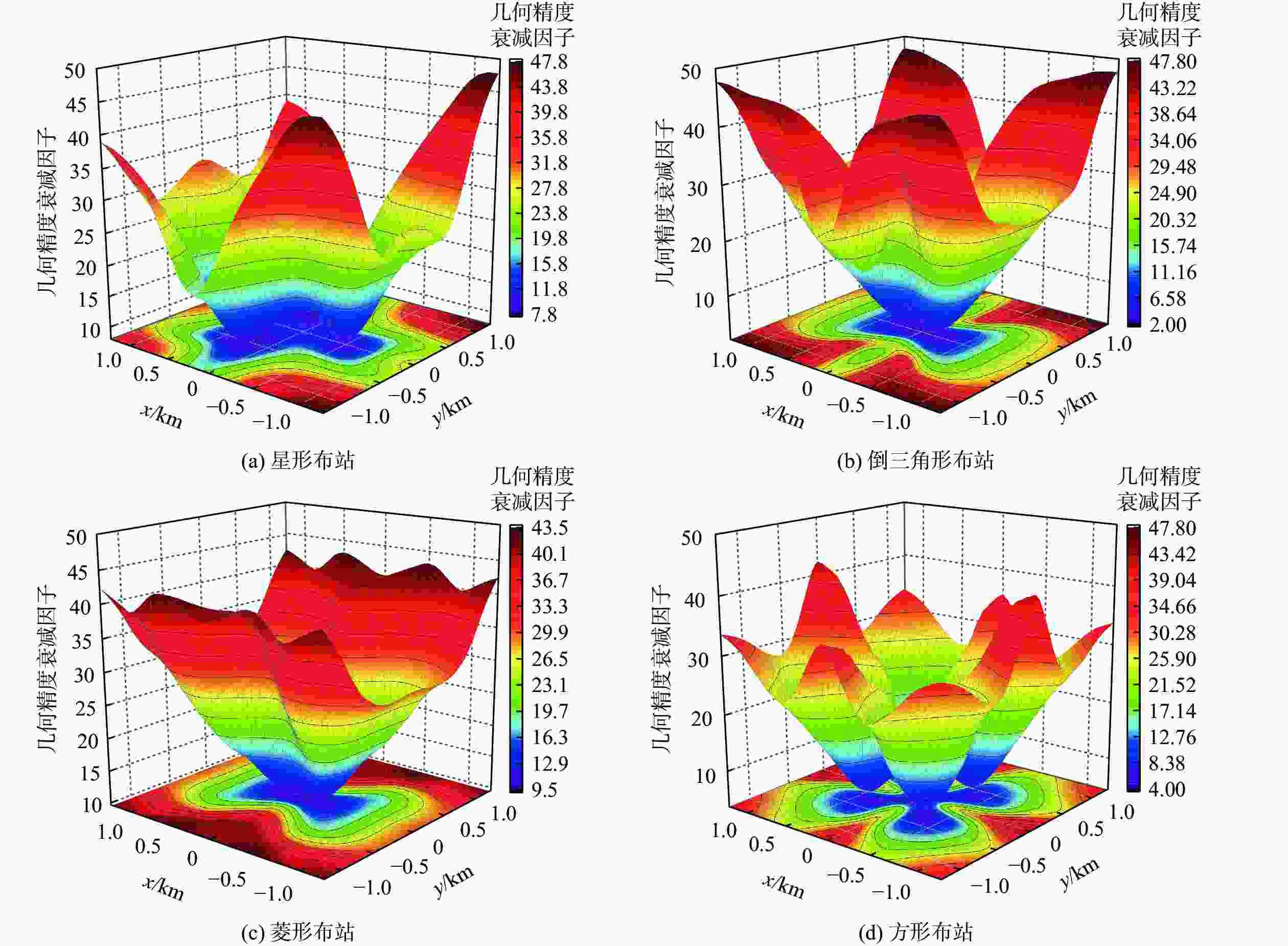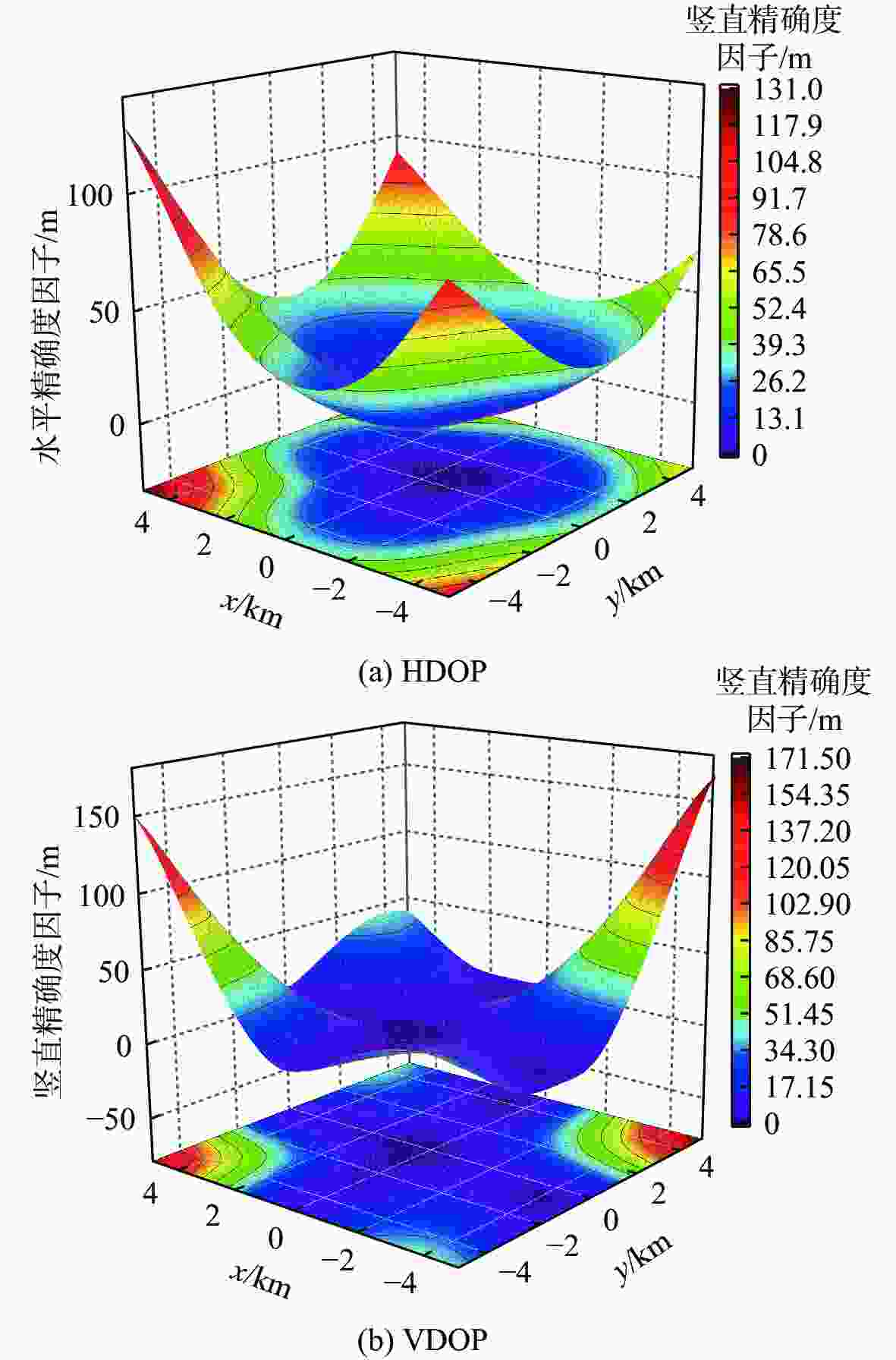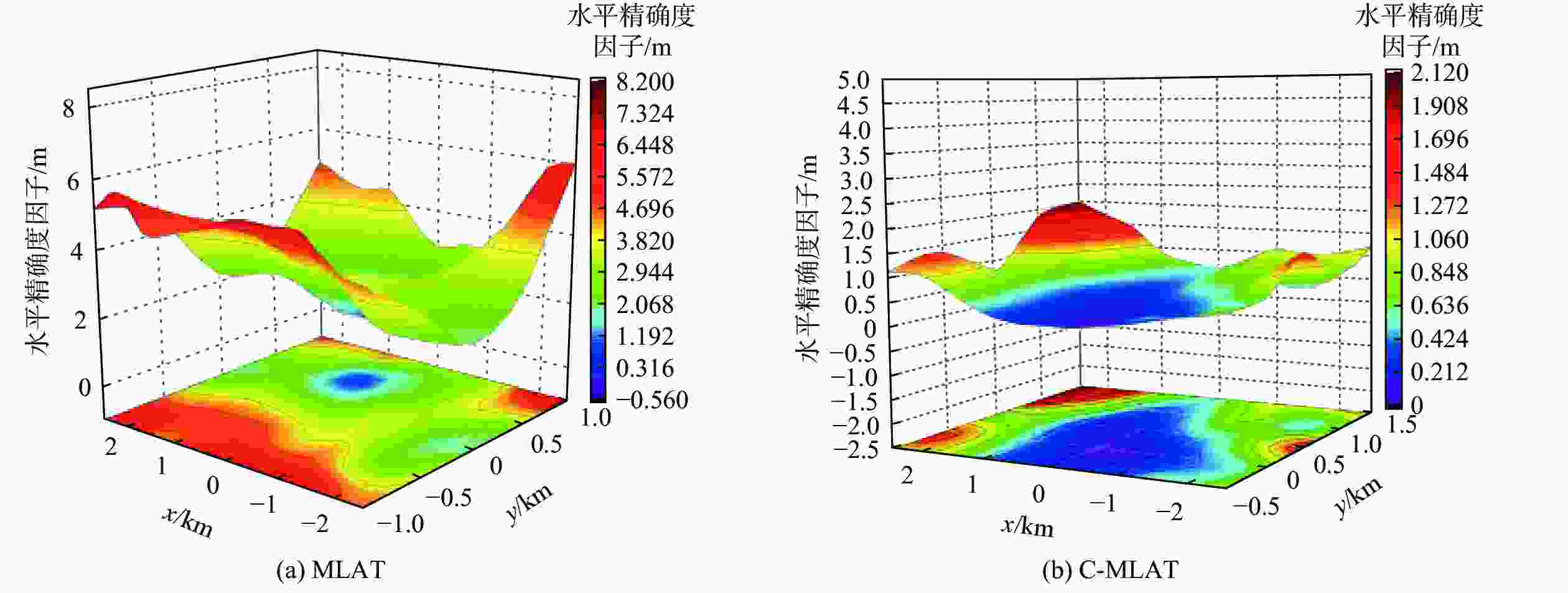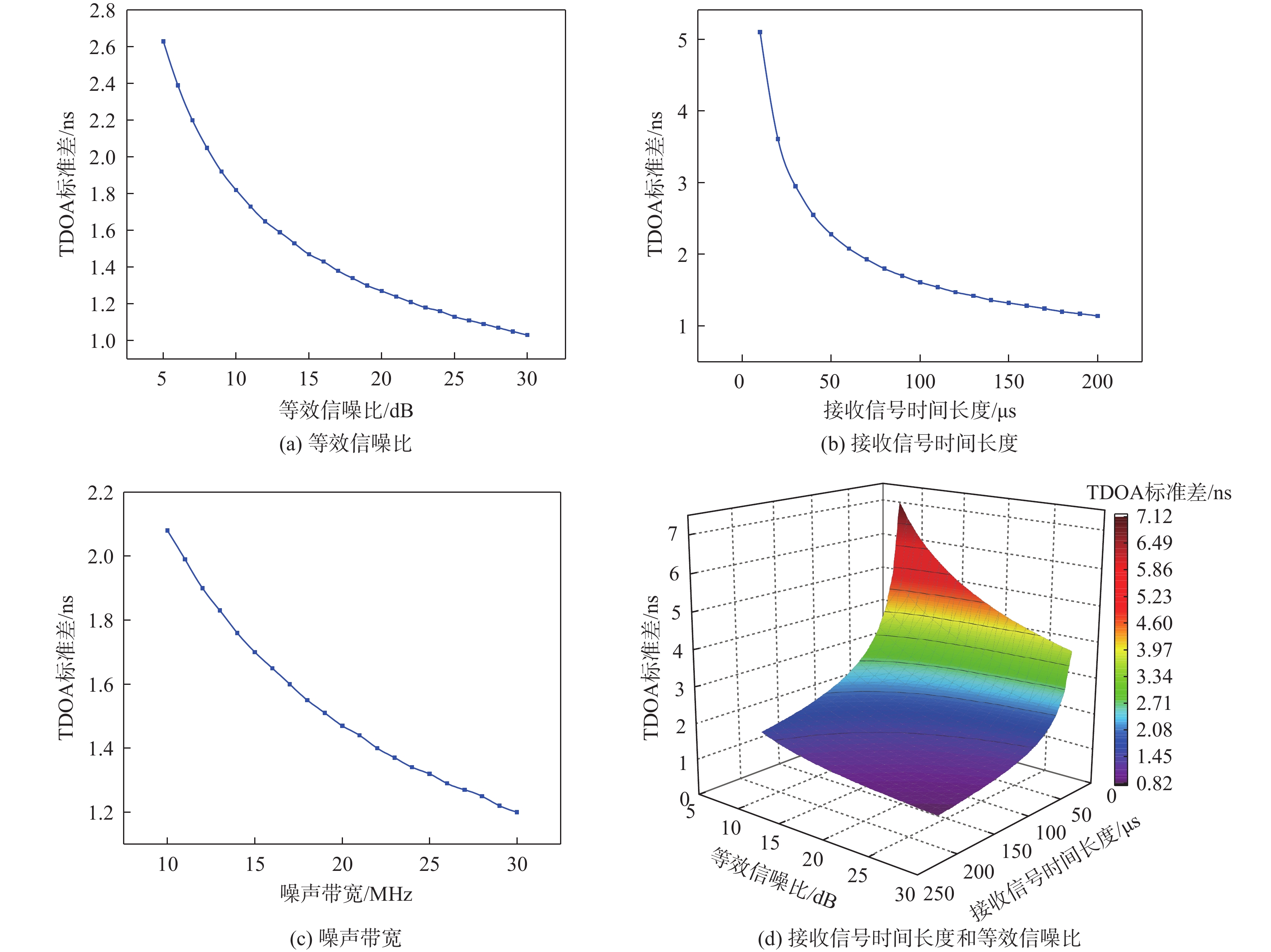-
摘要:
机场场面多点定位(MLAT)利用到达时间差(TDOA)实现目标定位。针对多点定位模式存在时延标准差大、基线较长、竖直方向精确度较差、布设难度大等问题,引入基站簇概念,提出一种多点定位基站簇布站(C-MLAT)模式,揭示基站簇定位原理及性能状态,建立C-MLAT模型。基站簇内部易于时钟精确同步,简化几何精度衰减因子(GDOP)计算,GDOP分布状态证明C-MLAT在缩短基线后通过补充站或多基站簇联合定位的方式,都可满足定位需求。利用C-MLAT建立甲、乙2类布站方式,水平方向精确度误差与竖直方向精确度误差显著降低,其中,甲、乙2类C-MLAT将水平方向精确度误差分别提高到1.76 m和1.69 m,竖直方向精确度误差分别降低约26%和36%,验证了C-MLAT定位具有更佳的性能和应用优势。
Abstract:The time difference of arrival (TDOA) can be used for airport surface multilateration (MLAT). In order to resolve the problems which include large time delay standard deviation, long baseline, poor vertical positioning accuracy, and difficult layout design, etc. A base station cluster layout of multilateration (C-MLAT) method is suggested along with the introduction of the base station cluster concept. The principle and performance state of the base station cluster location is revealed, and the C-MLAT model is established. It is easy to accurately synchronize the clock in the base station cluster and simplify the geometric dilution of precision (GDOP) calculation. The GDOP distribution state proves that C-MLAT can meet the positioning requirements by means of supplementary station or multi-base station cluster joint positioning after shortening the baseline. The horizontal accuracy error and vertical accuracy error are significantly reduced by using C-MLAT to establish class A and class B station distribution methods. The vertical positioning inaccuracy of class A and class B C-MLAT is reduced by approximately 26% and 36%, respectively, while the horizontal positioning accuracy of class A and class B C-MLAT is enhanced to 1.76 m and 1.69 m, respectively. In conclusion, C-MLAT positioning has better performance and application advantages.
-
表 1 甲、乙2类C-MLAT的GDOP对比
Table 1. Comparative of GDOP between class A C-MLAT and class B C-MLAT
布站方式 GDOP均值 MLAT 53.21 甲类C-MLAT(N=1) 73.53 甲类C-MLAT(N=2,水平) 38.69 甲类C-MLAT(N=2,垂直) 28.52 甲类C-MLAT(N=3) 6.23 乙类C-MLAT(N=2) 48.39 乙类C-MLAT(N=3) 23.88 表 2 C-MLAT系统的技术指标
Table 2. Technical indexes of C-MLAT system
技术指标 性能 工作频率/MHz 1090 ± 3 工作信号模式 S模式 接收机灵敏度/dBm −90 最大跟踪数量 500 基站簇内时间误差/ns <2 基站簇间时间误差/ns <10 覆盖范围 依赖基站簇和补充站的数量 定位精确度/m 终端区:<7.5,其他:<20 表 3 甲类C-MLAT和MLAT的VDOP和HDOP对比
Table 3. Comparative of VDOP and HDOP between class A C-MLAT and MLAT
m 布站方式 HDOP均值 VDOP均值 MLAT 43.56 36.75 甲类C-MLAT(N=2,垂直) 32.32 26.91 表 4 乙类C-MLAT和MLAT的VDOP和HDOP对比
Table 4. Comparative of VDOP and HDOP between class B C-MLAT and MLAT
m 布站方式 HDOP均值 VDOP均值 MLAT 43.56 36.75 乙类C-MLAT(N=2) 39.14 30.61 表 5 甲、乙2类C-MLAT的VDOP和HDOP对比
Table 5. Comparative of VDOP and HDOP between class A C-MLAT and class B C-MLAT
m 布站方式 HDOP均值 VDOP均值 甲类C-MLAT(N=2,垂直) 30.52 25.55 乙类C-MLAT(N=2) 29.38 23.49 -
[1] 孙卓振. 广域多点定位系统关键技术分析[D]. 成都: 电子科技大学, 2012.SUN Z Z. Key technology analysis of wide area multipoint positioning system[D]. Chengdu: University of Electronic Science and Technology of China, 2012(in Chinese). [2] CHAN Y T, HO K C. A simple and efficient estimator for hyperbolic location[J]. IEEE Transactions on Signal Processing, 1994, 42(8): 1905-1915. doi: 10.1109/78.301830 [3] GALATI G, LEONARDI M, TOSTI M. Multilateration as a distributed sensor system: Lower bounds of accuracy[C]//Proceedings of the Radar Conference. Piscataway: IEEE Press, 2008: 196-199. [4] 汪波, 薛磊. 基于遗传算法的TDOA定位系统的最优布站算法[J]. 系统工程与电子技术, 2009, 31(9): 2125-2128. doi: 10.3321/j.issn:1001-506X.2009.09.022WANG B, XUE L. Station arrangement strategy of TDOA location system based on genetic algorithm[J]. Systems Engineering and Electronics, 2009, 31(9): 2125-2128(in Chinese). doi: 10.3321/j.issn:1001-506X.2009.09.022 [5] 郭歆莹, 胥松寿. 基于改进型差分进化的MLAT系统布站方法研究[J]. 电子技术应用, 2021, 47(8): 101-105.GUO X Y, XU S S. Research on station layout of a MLAT system based on improved DE[J]. Computer Technology and Application, 2021, 47(8): 101-105(in Chinese). [6] 林冠英, 刘同木, 周保成. 水下定位系统的现状及应用展望[J]. 中外交流, 2016(20): 24.LIN G Y, LIU T M, ZHOU B C. Present situation and application prospect of underwater positioning system[J]. SINO-Foreign Exchange, 2016(20): 24(in Chinese). [7] MXXLOUD M L, SCHARF L L. A new subspace identification algorithm for high-resolution DOA estimation[J]. IEEE Transactions on Antennas and Propagation, 2002, 50(10): 1382-1390. doi: 10.1109/TAP.2002.805244 [8] TANG Y T, XU S, WANG X, et al. Direction of arrival estimation with antenna arrays based on fuzzy cerebellar model articulation controller neural network[J]. RF and Microwave Computer-Aided Engineering, 2020, 30(9): e2289. [9] RODGER C J, BRUNDELL J B, DOWDEN R L, et al. Location accuracy of long distance VLF lightning location network[J]. Annales Geophysicae, 2004, 22(3): 747-758. doi: 10.5194/angeo-22-747-2004 [10] STEIN S. Algorithms for ambiguity function processing[J]. IEEE Transactions on Acoustic Speech and Signal Processing, 1981, 29(3): 588-599. doi: 10.1109/TASSP.1981.1163621 [11] 姚金杰. 基于地面基站的目标定位技术研究[D]. 太原: 中北大学, 2011.YAO J J. Research on target localization technology based on ground base station[D]. Taiyuan: North University of China, 2011(in Chinese). [12] 白敏. 基于TDOA的陆基多点定位系统设计与定位算法研究[D]. 重庆: 重庆大学, 2010.BAI M. Design and algorithm research of land-based multi-point positioning system based on TDOA[D]. Chongqing: Chongqing University, 2010(in Chinese). [13] 孙仲康, 周一宇, 何黎星. 单多基地有源无源定位技术[M]. 北京: 国防工业出版社, 1996.SUN Z K, ZHOU Y Y, HE L X. Single multi-base active and passive positioning technology[M]. Beijing: National Defence Industry Press, 1996(in Chinese). [14] WANG B H, WANG Y L, CHEN H, et al. Array calibration of angularly dependent gain and phase uncertainties with carry-on instrumental sensors[J]. Science in China Series F:Information Sciences, 2004(6): 777-792. [15] WANG C, QI F, SHI G M, et al. A linear combination-based weighted least square approach for target localization with noisy range measurements[J]. Signal Processing, 2014, 94: 202-211. doi: 10.1016/j.sigpro.2013.06.005 [16] RASHEED K. An adaptive penalty approach for constrained genetic algorithm optimization[C]//Proceedings of the 3rd Annual Conference on Genetic Programming. Amsterdam: Elsevier, 1998: 584-590. [17] MANTILLA-GAVIRIA I A, LEONARDI M, GALATI G, et al. Time-difference-of-arrival regularised location estimator for multilateration systems[J]. IET Radar, Sonar and Navigation, 2014, 8(5): 479-489. doi: 10.1049/iet-rsn.2013.0151 [18] LEONARDI M, SPINELLI S, GALATI G. ADS-B/MLAT surveillance system from high altitude platform systems[C]//Proceedings of the 2011 Tyrrhenian International Workshop on Digital Communications Enhanced Surveillance of Aircraft and Vehicles. Piscataway: IEEE Press, 2011: 153-158. [19] EL-AZIZ M A. Source localization using TDOA and FDOA measurements based on modified cuckoo search algorithm[J]. Wireless Networks, 2017, 23(2): 487-495. doi: 10.1007/s11276-015-1158-y [20] HO K C, LU X N, KOVAVISARUCH L. Source localization using TDOA and FDOA measurements in the presence of receiver location errors: Analysis and solution[J]. IEEE Transactions on Signal Processing, 2007, 55(2): 684-696. doi: 10.1109/TSP.2006.885744 [21] NIELSEN R O. Relationship between dilution of precision for point positioning and for relative positioning with GPS[J]. Aerospace and Electronic Systems, 1997, 33(1): 333-338. doi: 10.1109/7.570809 -







 下载:
下载:


